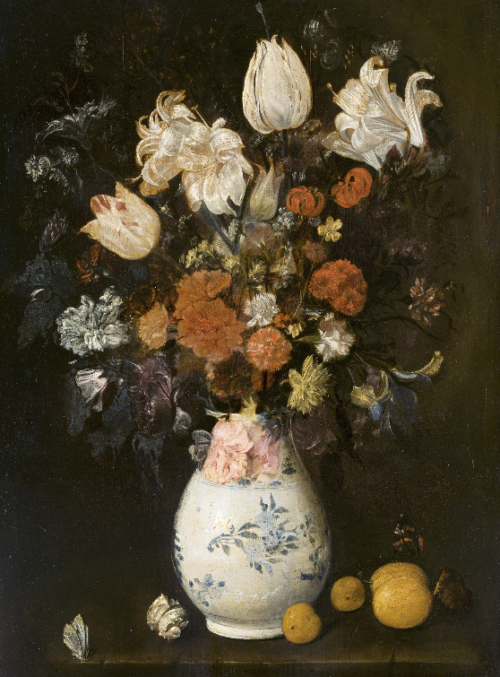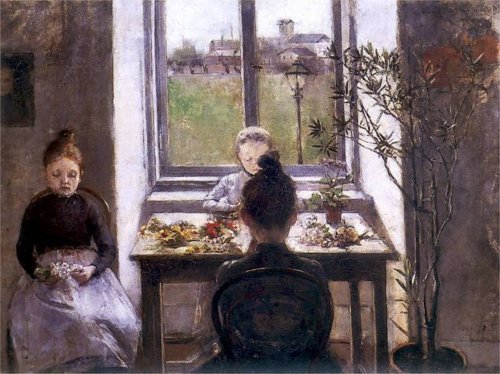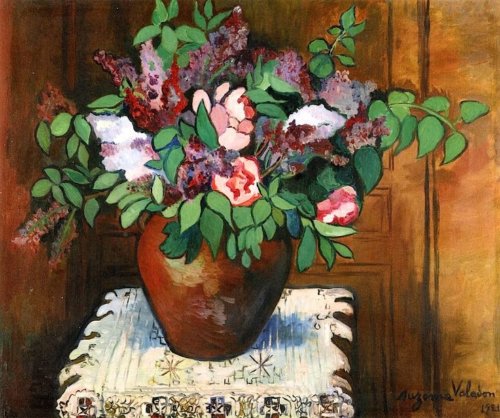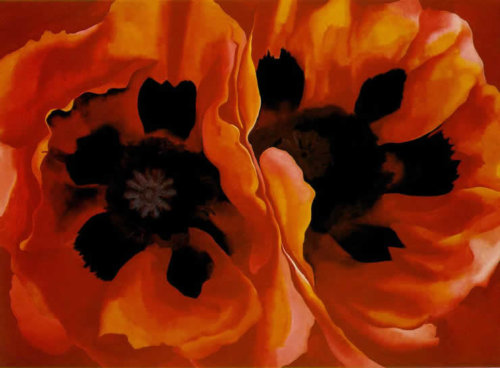Female Artists and Floral Paintings: An Enduring Legacy
Though flowers are often associated with the feminine, when it comes to the history of art, paintings of flowers have almost exclusively been created by male artists.
Yet, the still life painting of flowers in a vase is a classic subject dating back to the early Renaissance, and one that women have also contributed during different artistic periods, with various artistic styles and sensibilities.
Here are a few of our favorite female artists and brief explorations of their most iconic floral paintings (which historically took a backseat to the predominating “male” depictions of the same subject):
Judith Leyster
Dutch painter Judith Leyster (1609 – 1660) is credited with introducing a visible light source, such as a candle or a lamplight, to dimly lit scenes.
O’Keefe’s paintings of flowers are now considered sensual, even erotic, in their allusion to feminine forms, yet O’Keeffe insisted that her paintings were simply depictions of the beauty of flowers. “You hung all your own associations with flowers on my flower,” she quipped in 1939.
Flowers In A Vase (1654), wherein the background is dark gray, almost black, and the flowers and vase are glowing white, illustrates this style. Though there isn’t an identifiable light source in this painting, it’s as if the vase is illuminated from the inside, a technique which resembles Jan Brueghel the Elder’s Bouquet (1603)– one of the artist’s most famous paintings.
Leyster’s Tulip (1643), a watercolor and silverpoint painting on vellum, is widely considered to have been part of a tulip-bulb catalog. It is a departure from her depictions of intimate scenes between people, for which she is best known. Her diversion in medium and subject mirrors Leyster’s transition into domestic life, as she drew this at a time when she was married and a mother of five children.
Olga Boznańska
Olga Boznańska (1865 – 1940) was a Polish painter who studied both in Poland and Munich. Influenced by artists like Velazquez, Manet, and Japanese woodcutters, her painting, Flower Sellers (1889), which depicts three girls preparing bouquets around the table, abandons traditional composition and is characterized by a similar gray emerald tone.
The progression from Flower Sellers to her later painting, Still Life With White Flowers And Japanese Doll (1918), shows how Boznańska’s work evolved to become more abstract, playing on the initial inclination already evident in her earlier work. In impressionistic strokes of somber purples, reds, and greens, she depicts a typical still life setup with a table and background.
In the center, a shining bulb of white flowers is just barely defined with a few brush strokes. Boznańska’s later work, in particular, is reminiscent of Monet’s Water Lilies series, which are now considered a bridge between realism and abstract art.
Suzanne Valadon
Suzanne Valadon (1865 – 1938) started her painting career as an artist’s model in Montmartre, Paris, where she posed for artists like Pierre-Auguste Renoir and Luigi Zandomeneghi. Though her favorite subjects were portraits, she also created many still life paintings of flowers.
Vase of Flowers (1921) is a bold and colorful rendering reminiscent of the French impressionist Edgar Degas’s work. (Degas supported Valadon’s art career and had a significant influence on her work.) Vase of Flowers combines both abstract and realistic elements: Valadon creates a setting of three-dimensional space, but at the same time playfully bends and defies that space: the leaves of the flowers are solid green shades, so they appear flat, while she gives the vase depth and form through shadow. This playful style closely resembles Matisse’s flower paintings.
Georgia O’Keefe
“I’ll paint it big, and they will be surprised into taking time to look at it,” Georgia O’Keefe (1887 – 1986), once said of these works. “I will make even busy New Yorkers take time to see what I see of flowers,” said the American painter, now most famous for her provocative paintings of flowers and natural forms.
O’Keefe’s paintings of flowers are now considered sensual, even erotic, in their allusion to feminine forms, yet O’Keeffe insisted that her paintings were simply depictions of the beauty of flowers. “You hung all your own associations with flowers on my flower,” she quipped in 1939. “You write about my flower as if I think and see what you think and see of the flower—and I don’t.”
O’Keefe’s flower paintings border on the abstract and the sensual, yet they’re grounded in a strong depiction of nature. Oriental Flowers (1928), one of her most famous works, combines intricate brush strokes with bright oranges, reds, and black to integrate the technical with the abstract.
The flowers are so detailed that the background is eliminated– a means of directing focus inspired by photographic elements of cropping and magnifying. In this way, O’Keefe’s flowers have become iconic for their ability to integrate the intimate and the grandiose in a single form.
Much like the depiction of flowers across history, O’Keefe’s work stands as a testament to the enduring appeal of flowers, which are not only revered for their beauty, but as a subject of both contemplation and inspiration– from the field to the vase.




































